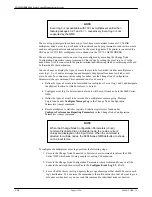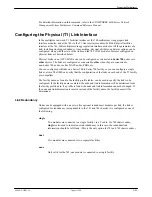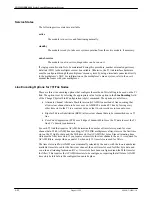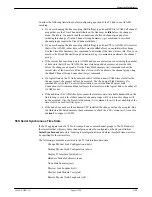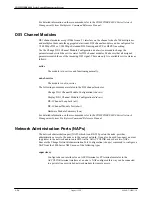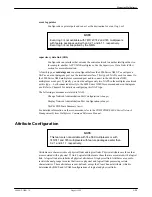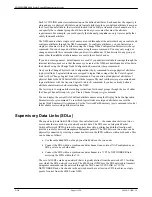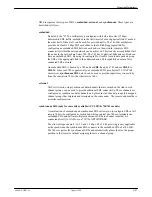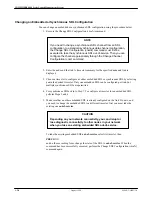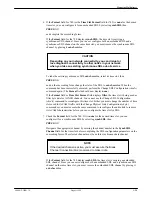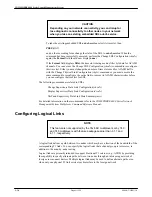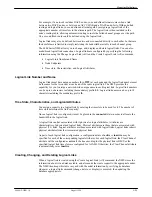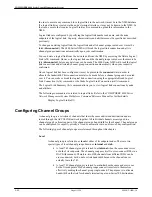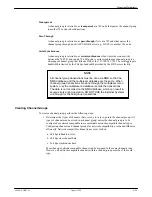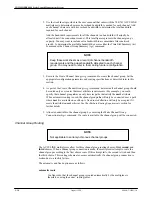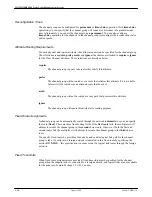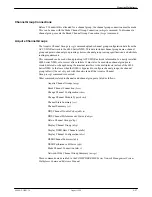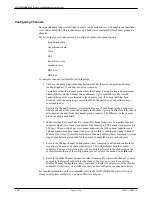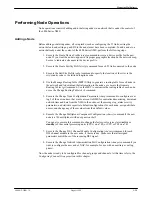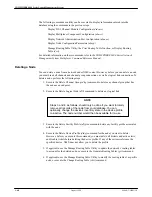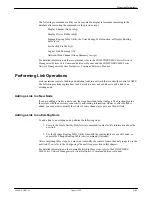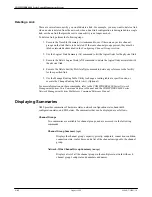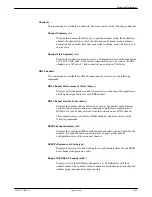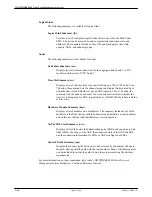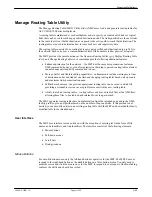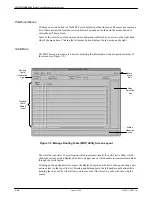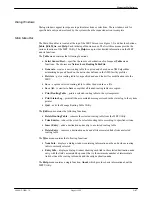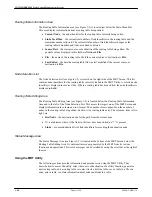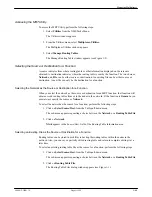
COMSPHERE 6800 Series Nework Management System
1-34
August 1994
6800-A2-GB21-10
2. Use the worksheets provided in the user’s manual that came with the 740/741 ACCULINK
multiplexer to determine how much overhead bandwidth is needed for each channel. Add
each channel’s data rate with its overhead bandwidth to determine the total bandwidth
required for each channel.
Add the bandwidth requirements for all the channels (no bandwidth will actually be
allocated until the connection is made). This total figure represents the channel group’s
capacity. You may want to include extra bandwidth to accommodate future network
growth. To determine the available bandwidth, execute either the Time Slot Summary (tss)
command or the Channel Group Summary (cgs) command.
NOTE
Keep these worksheets as a record of channel bandwidth
requirements and the actual bandwidth allocated to each channel
group. You may need to refer to them during future reconfiguration.
3. Execute the Create Channel Group (crcg) command to create the channel group. Set the
appropriate configuration parameters and routing specifications as described later in this
section.
4. As part of the Create Channel Group (crcg) command, determine if a channel group should
be routed only over routes that meet attribute requirements. (For example, you could
specify that channel group abc can only traverse paths that satisfy the user1 attribute.
When automatic routing is used, the channel group abc will only be connected over a path
where user1 is available on each hop. A fixed route definition will only be accepted if it
meets the attribute user1 criteria.) See the Attribute Routing Requirements section for
further details.
5. Allocate bandwidth to the channel group by executing the Make Channel Group
Connection (mkcgc) command. If a route is available, the channel group will be connected.
Channel Group Routing
NOTE
Not applicable to serial synchronous channel groups.
The ACCULINK multiplexers allow for three channel group routing choices: first, second, and
third choices. When a channel group connection is made, the multiplexers attempt to route the
channel group according to the first choice route. If this attempt fails, the second is tried and then
the third choice. This routing scheme also occurs automatically if a channel group connection is
broken due to a facility failure.
The automatic and fixed options are as follows.
automatic route
Configured so that the channel group is routed automatically by the multiplexers
themselves, using the nodes’ routing tables.

